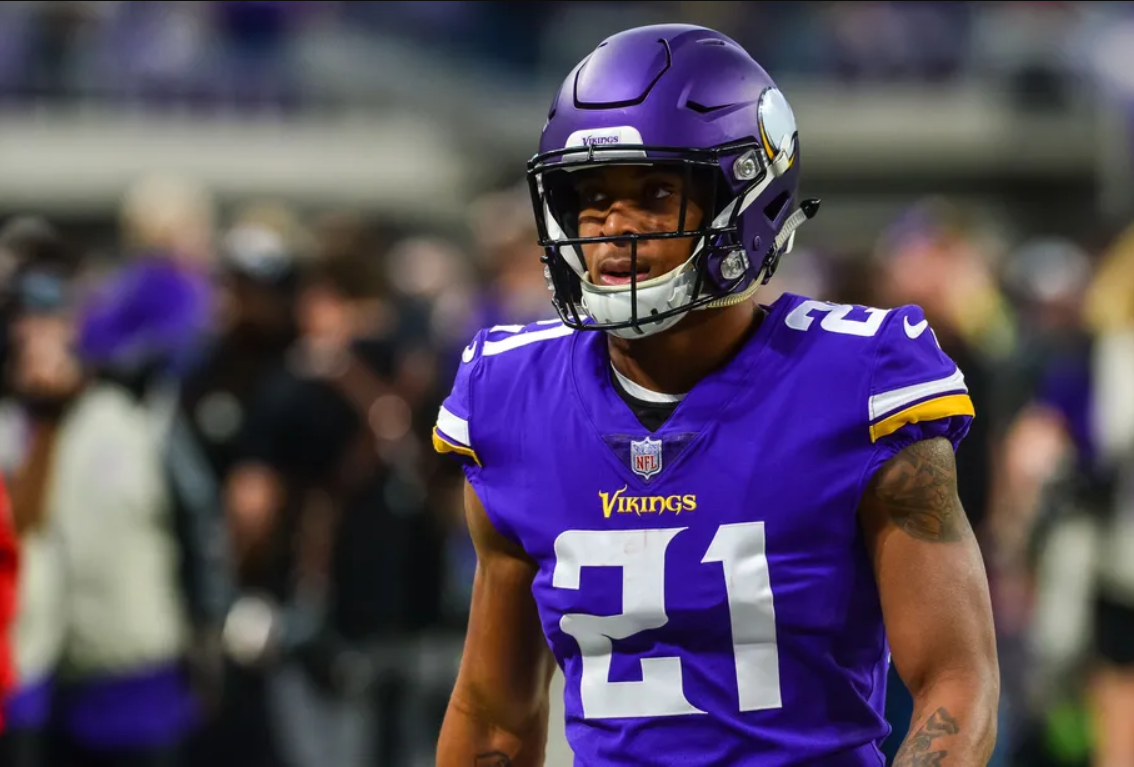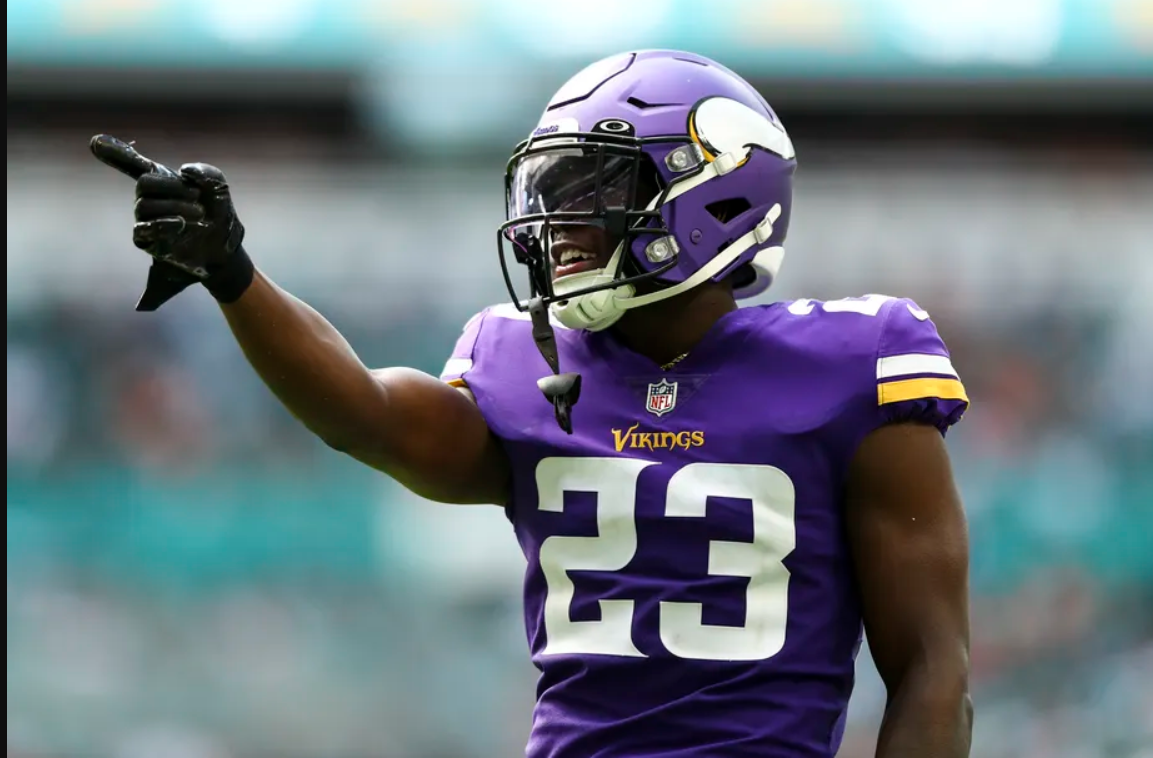Ranking the Vikings’ 5 Worst Draft Picks of the Last Decade
The NFL Draft is one of the most important times of the year for all 32 NFL teams. Over the three days the draft takes place, every team is looking to find young stars, and their team improves.
The Minnesota Vikings are one team that has done a good job of adding stars through the draft in the past decade. Players like running back Dalvin Cook, wide receiver Jordan Addison, wide receiver Justin Jefferson and offensive lineman Garrett Bradbury have all succeeded with the Vikings. While these players have succeeded, not every Vikings pick has had the same luck.
Here are five of the Vikings' worst draft picks in the last decade.
5. Irv Smith Jr., Tight End - 2019 2nd Round, 50th overall
Photo Credit: AP Photo, David Berding
When the Vikings drafted Smith Jr. with the No. 50 pick in the 2019 Draft, they were hoping that he could develop into their next number one tight end since Vikings legend Kyle Rudolph's career was winding down. Smith Jr. entered the league with the receiving ability necessary to take over for Rudolph but needed to improve as a blocker.
Throughout the first two years of his career Smith Jr. was Rudolph’s backup. As a rookie, Smith Jr. played in all 16 games, finishing the season with 35 receptions for 311 yards and two touchdowns. That’s decent production for a rookie. That was the team’s fifth receiving threat.
In his second season, Smith Jr. caught 30 passes for 365 yards and five touchdowns. Smith Jr. was more productive on fewer catches while staying as the Viking's fourth or fifth-best option, which was a good sign for him. However, just as Smith Jr. was getting ready to become the lead tight end in 2021, he tore his meniscus, forcing him to miss the season. When he returned in 2022, he was the team’s best receiving tight end for the first seven weeks of the season. In the first seven weeks, he had 22 catches for 168 yards and two touchdowns. In week eight, he suffered a high ankle sprain that caused him to miss the rest of the regular season.
The Vikings decided not to resign Smith Jr. after the 2022 season because they had traded for Lions star tight end T.J. Hockenson. In 2023, Smith Jr. played for the Cincinnati Bengals and had the same production he had in Minnesota.
4. Mike Hughes, CB- 2018 1st round, 30th overall
Photo Credit: Jeffrey Becker, USA TODAY Sports
The Vikings drafted cornerback Mike Hughes out of Central Florida to aid an aging secondary. Hughes’s strengths entering the NFL included playing sticky coverage, playing with physicality, and the ability to play both inside corner and outside corner. The areas that impacted Hughes’s game the most included his height, technique and footwork, and how much he grabbed in coverage.
Even with the weaknesses in Hughes’s game, he was a day-one starter for the team. In his rookie season, Hughes played six games and gathered one interception returned for a touchdown, one forced fumble, one fumble recovery and 22 combined tackles. In Week 7, Hughes tore his ACL, which ended his season. Although that’s a terrible way for a rookie season to end, hopes were still high for Hughes after his performance.
In 2019, Hughes played 14 games (3 starts) and gathered 45 combined tackles, one interception, two forced fumbles and two fumble recoveries. In double the playing time from his rookie season, Hughes doubled his stats, which is good.
Hughes’s third season was riddled with injuries, only allowing him to play four games. Following the 2020 season, the Vikings decided to move on from Hughes, trading him to the Kansas City Chiefs. Hughes played all 17 games in 2021 as a Chief gathering, gathering 47 combined tackles, one interception, four forced fumbles and one fumble recovery. The Chiefs chose not to extend Hughes after 2021, and since then, he has signed with the Detroit Lions and Atlanta Falcons. In both Atlanta and Detroit, Hughes's production got worse. Overall, Hughes was a terrible pick for the Vikings, he just didn't live up to the expectations of being a first-round cornerback.
3. Andrew Booth Jr., CB - 2022 2nd Round, 42nd overall
Photo Credit: Kevin Sabitus, Getty Images
Ever since cornerbacks Xavier Rhodes and Tre Waynes left the Vikings in 2019, the team has been trying to find replacements. Andrew Booth Jr. was one of the Vikings’ attempts to find a young star cornerback. Coming out of Clemson, Booth Jr. was athletic, but his coverage needed work.
Booth Jr.'s struggles in coverage have been apparent through his first two seasons in the NFL. In his rookie season, Booth Jr. played six games, had an 84.6% completion rate against him, and allowed 11.7 yards a catch. Performing like that was enough to get Booth Jr. benched.
This past season, Booth Jr. did play in all 17 games (one start) and showed mild improvement. The completion rate against him dropped to 70%, but his average yards allowed per catch went up to 12 yards. That is the definition of taking one set forward and one step back. While it may be too early to call Booth Jr. a complete bust, it looks to be trending in that direction.
2. Lewis Cine, S - 2022 1st round, 32nd overall
Photo Credit: AP Photo, Abbie Parr
A round before the Vikings took Booth Jr. they drafted safety Lewis Cine out of Georgia. Scouts were concerned with how Cine’s weight, size and coverage ability would translate to the NFL. Like any player, Cine also had strengths. His strengths included being a hard hitter, being fast, and the ability to read zones.
Since being drafted by the Vikings, Cine has played a total of ten games and has only recorded one combined tackle. During Cine’s rookie season, he missed 13 games due to a compound left leg fracture. The other 22 games Cine could have played in, he was a healthy scratch. For that fact alone, Cine has been a huge bust in the first two years of his career.
Laquon Treadwell, WR - 2016 1st round, 23rd overall
Photo Credit: Mark J. Rebilas, USA TODAY Sports
Entering the NFL, Ole Miss wide receiver Laquon Treadwell was compared to wide receiver DeAndre Hopkins because of his ball skills and production in college. Treadwell’s career did not turn out to be anything like Hopkins's. Instead, he turned out to be one of the bigger busts at wide receiver in the past decade.
In his rookie season, Treadwell played nine games and gathered just a single catch for 15 yards. That’s a horrendous rookie season for any player, but especially for someone drafted within the first round. The only bright side to that bad of a start is it can't get much worse. In year two, Treadwell played 16 games and had 20 catches on 35 targets for 200 yards and a touchdown. Treadwell definitely showed improvement in year two, but his play still did not reflect a receiver taken as high as he was.
In his third season, Treadwell played 15 games, recording 35 catches on 53 targets for 302 yards and a touchdown. By the end of year three, it was clear that Treadwell was not going to turn into anything special, but he still had one year left on his rookie contract. In his final year in Minnesota, Treadwell played 13 games, gathered nine catches on 16 targets, had 184 receiving yards, and caught one touchdown. After leaving Minnesota, Treadwell has been on a new team each season. His inability to find a stable place to play shows just how big of a bust he is.




